How to Choose the Right Sawmill for Your Lumber Needs
- August 22, 2024
- 0 comment
Choosing the right Sawmill Lumber is crucial for the success of your woodworking projects, operational efficiency, and overall profitability. The sawmill you select will directly affect the quality of your lumber, the variety of wood you can process, and how cost-effective your operations are. Whether you’re an experienced professional or just starting in the woodworking industry, making an informed decision on the sawmill that best suits your needs is essential for achieving the best results.

A well-chosen sawmill lumber ensures you can produce high-quality lumber that meets your specific requirements, whether for personal projects or commercial production. It allows you to efficiently process different types of wood, from hardwoods to softwoods, and helps you manage your production costs by minimizing waste and optimizing resource use.
By understanding the key factors involved in selecting a sawmill, such as cutting capacity, type, and features, you can make a decision that supports your long-term goals and contributes to the success of your woodworking endeavors.
Assessing Your Specific Requirements
Before exploring the available options, it’s essential to have a clear understanding of your specific needs and goals. The right sawmill lumber for your operation will depend heavily on the following factors:
- Type of Wood: Different types of wood require different sawmill capabilities. For instance, hardwoods like oak and maple are denser and require more powerful machinery compared to softwoods like pine and cedar. If you plan to process a variety of woods, you’ll need a versatile sawmill that can handle different densities and grain structures.
- Volume of Production: The scale of your operations is a crucial determinant. Are you processing a few logs for personal projects, or do you need to produce large quantities of lumber for commercial use? High-volume operations necessitate industrial-grade sawmills with high throughput capabilities, while smaller, custom operations may only require a portable or mid-sized sawmill.
- Desired Lumber Dimensions: The specific sizes and shapes of lumber you need will also influence your choice. Some sawmills are better suited for producing large beams, while others excel at cutting smaller, more precise boards. Ensure the sawmill you choose can accommodate the dimensions of the logs and the final lumber products you intend to produce.
- End-Use of Lumber: Consider the final application of the lumber. Lumber for construction purposes may require different cutting and processing techniques than lumber for furniture making or fine woodworking. The intended use will dictate the necessary precision and finishing capabilities of the sawmill.
Understanding the Different Types of Sawmills
There are various types of sawmills lumber available on the market, each designed to serve specific purposes. Understanding the differences between them can help you make an informed decision:
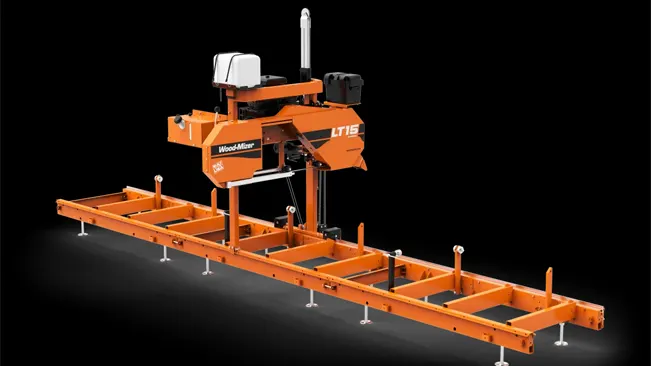
- Portable Sawmills: Ideal for small-scale operations and custom projects, portable sawmills are compact and can be transported to different locations. These sawmills are versatile and allow you to mill logs directly at the site of the felling, which can save on transportation costs. However, they may not be suitable for high-volume production due to their limited capacity.
- Band Sawmills: These sawmills use a continuous band blade that produces smooth and accurate cuts. Band sawmills are known for their efficiency and minimal waste production, making them a popular choice for both hobbyists and small businesses. They come in both portable and stationary versions, offering flexibility depending on your needs.
- Circular Sawmills: Circular sawmills use a rotating circular blade and are typically used in industrial settings where large volumes of wood need to be processed quickly. These sawmills are robust and can handle large-diameter logs, but they may produce more waste compared to band sawmills due to the kerf (the width of the cut made by the blade).
- Swing Blade Sawmills: Swing blade sawmills utilize a circular blade that can pivot, allowing for both horizontal and vertical cuts. This feature makes them highly versatile and capable of processing large logs into dimensional lumber efficiently. They are often used in remote locations due to their ability to handle large logs without the need for heavy machinery.
- Chainsaw Mills: Chainsaw mills are the most basic type of sawmill and are usually used for small-scale, personal projects. They are highly portable and cost-effective for producing rough-cut lumber, but they are not suitable for precise or large-scale milling.
Key Features to Consider in a Sawmill Lumber
The following table summarizes the key features you should evaluate when choosing sawmill lumber:
| Feature | Description |
|---|---|
| Frame Construction | Look for frames made from durable materials like heavy-duty steel or aluminum to ensure stability and longevity. |
| Component Quality | High-quality bearings, pulleys, and belts are essential for reducing maintenance and ensuring the sawmill’s durability. |
| Manufacturer’s Reputation | Choose brands with a proven track record in the industry, known for producing reliable and durable equipment with strong customer support. |
| Longevity of Parts | Ensure that replacement parts are readily available and that the sawmill is designed for easy maintenance over the long term. |
| Cutting Capacity | Select a sawmill that can handle the maximum log diameter and length you plan to process, offering flexibility in lumber production. |
| Blade Quality | High-quality blades made from hardened steel will provide cleaner cuts and reduce the need for frequent sharpening. |
| Power Source | Consider the power source—whether gas, diesel, or electric—based on your operational needs and the availability of fuel or electricity in your area. |
| Portability | Decide whether you need a portable sawmill for on-site milling or a stationary model for high-volume production in a fixed location. |
| Automation Features | Look for automation features such as digital controls and automated log handling to increase efficiency and reduce human error. |
Evaluating Build Quality and Durability
When investing in sawmill lumber, it’s important to choose a model that is built to last. The durability of a sawmill largely depends on the quality of its foresty tools construction, starting with the frame. A strong frame made from heavy-duty steel or aluminum will provide the necessary stability during operation and withstand the wear and tear of regular use. Avoid sawmills with frames made from lightweight or low-quality materials, as they are more likely to suffer damage over time and may not hold up under the demands of heavy-duty milling.
In addition to the frame, the quality of the sawmill’s components is equally important. High-quality bearings, pulleys, and belts contribute to the machine’s overall durability and reduce the likelihood of frequent repairs. When evaluating a sawmill, it’s also wise to consider the reputation of the manufacturer. Brands with a strong track record in the industry are more likely to produce reliable equipment and offer robust warranties. They also tend to provide better customer support, which is crucial if you need assistance or replacement parts in the future.
Finally, consider the availability and longevity of replacement parts. Sawmills from well-established manufacturers typically have a better supply of parts, making maintenance easier and more affordable in the long run. By choosing a sawmill lumber with durable construction and reliable components, you’ll ensure that your investment serves you well for years to come.
Cost Considerations and Budgeting
While quality and features are important, your budget will ultimately determine the sawmill lumber you choose. Here’s how to approach the financial aspects:

- Initial Investment: The purchase price of a sawmill can vary widely depending on the type, size, and features. Higher-end models with advanced features will cost more upfront, but they may offer better long-term value due to increased efficiency and lower operating costs.
- Operational Costs: In addition to the initial purchase price, consider the ongoing costs of running the sawmill. This includes fuel or electricity, blade replacements, and routine maintenance. A sawmill with lower operational costs may be more economical in the long run, even if the initial investment is higher.
- Maintenance Expenses: Regular maintenance is essential to keep your sawmill running smoothly. Factor in the cost of replacement parts, repairs, and downtime. Sawmills with high-quality components may require less frequent maintenance, reducing overall expenses.
- Resale Value: The resale value of a sawmill can be an important consideration, especially if you plan to upgrade in the future. High-quality sawmills from reputable brands often retain their value better than cheaper models, making them a smarter long-term investment.
Comparing Different Sawmill Lumber Models
Before making your final decision, it’s advisable to compare different sawmill lumber models side by side. Here’s how to evaluate them effectively:
- Performance Testing: If possible, test the sawmills in person or watch demonstrations. Pay attention to the cutting speed, the smoothness of the cuts, and the sawmill’s ability to handle different types of wood. A sawmill that performs well in real-world conditions is more likely to meet your needs.
- Ease of Use: The sawmill should be user-friendly, with controls that are easy to understand and operate. Test the ease of blade adjustments, log handling, and other features that will impact your daily operations.
- Noise and Vibration Levels: High levels of noise and vibration can be disruptive and may indicate lower build quality. Look for sawmills that operate smoothly and quietly, especially if you plan to use the mill in a residential or noise-sensitive area.
- Customer Reviews and Feedback: Customer feedback can provide valuable insights into the long-term reliability and performance of a sawmill. Look for reviews from users with similar needs and operations to gauge how well the sawmill will perform for you.
Benefits of Owning a Portable Sawmill
Owning a portable sawmill lumber offers significant flexibility and convenience, making it an invaluable asset for anyone involved in woodworking or forestry. One of the primary benefits is the ability to mill lumber directly at the location where the trees are harvested. This eliminates the need to transport large logs to a stationary sawmill, which can be both costly and time-consuming.
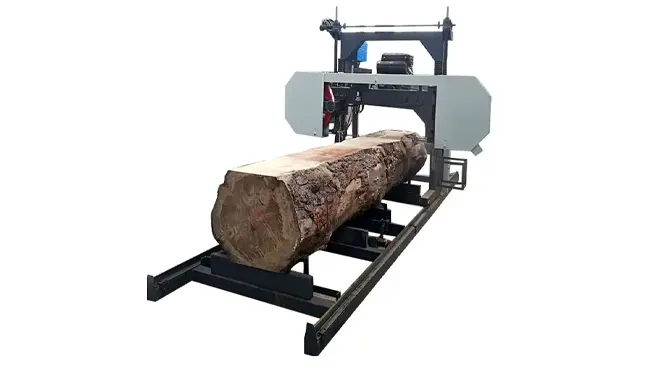
By bringing the sawmill to the wood, you can save on transportation costs, reduce the environmental impact of hauling heavy logs, and maintain greater control over the milling process, ensuring that the lumber meets your specific requirements. Another key advantage of a portable sawmill is its versatility and adaptability to various projects.
Whether you’re a small-scale woodworker, a custom furniture maker, or a landowner managing your own timber, a portable sawmill allows you to produce lumber on demand, tailored to your exact needs. This capability can lead to substantial cost savings, as you can avoid the markups associated with purchasing pre-cut lumber. Additionally, having the ability to process your own wood opens up opportunities for creating custom cuts, unique dimensions, and specialized lumber that may not be readily available from commercial suppliers.
Making the Final Decision
When making the final decision on which sawmill to purchase, it’s essential to consider all the factors you’ve carefully evaluated your specific needs, the types of wood you plan to process, your budget, and your long-term goals. Think about how each sawmill option aligns with your daily operations and future projects. For instance, if you anticipate scaling up your production, investing in a more robust, higher-capacity sawmill now may save you from needing to upgrade later.
Similarly, if you prioritize mobility for on-site work, a portable sawmill with the right balance of features and durability could be the best fit. Balancing these considerations against your budget will help ensure that you get the most value from your investment. Remember, choosing the right sawmill is not just about immediate needs but also about the future of your woodworking or forestry operations.
A well-chosen sawmill will provide reliable service for years, supporting your business growth and enabling you to produce high-quality lumber consistently. This decision is a significant investment in the longevity and efficiency of your operations, so take the time to make an informed choice. By doing so, you’ll set the foundation for successful projects and sustained profitability in the long run.
Conclusion
Choosing the right sawmill lumber is a crucial step in ensuring the success and efficiency of your woodworking or forestry operations. The sawmill you select will influence the quality of the lumber you produce, the variety of wood you can process, and the overall cost-effectiveness of your work.
Whether you’re a professional with years of experience or just starting in the industry, understanding your specific needs and evaluating the key features of different sawmills will guide you in making the best choice. By carefully considering factors such as the type of wood, volume of production, and long-term goals, you can invest in a sawmill that not only meets your immediate requirements but also supports your future growth.
Ultimately, the right sawmill is an investment in your project’s success. A well-chosen sawmill will allow you to produce high-quality lumber, manage costs efficiently, and maintain the flexibility needed to adapt to various projects. As you finalize your decision, remember that taking the time to evaluate your options thoroughly will pay off in the long run, ensuring that your sawmill serves you well for years to come, contributing to the sustained profitability and success of your operations.
Frequently Asked Questions
1. What factors should I consider when choosing a sawmill lumber?
Consider the type of wood you plan to process, the volume of production, desired lumber dimensions, and the end use of the lumber. These factors will help you select a sawmill that matches your specific needs.
2. What are the main types of sawmill lumber available?
The main types of sawmills include portable sawmills, band sawmills, circular sawmills, swing blade sawmills, and chainsaw mills. Each type is suited for different scales of production and wood processing needs.
3. How important is the cutting capacity of a sawmill lumber?
Cutting capacity is crucial as it determines the maximum log diameter and length that the sawmill can handle. A sawmill with a larger cutting capacity offers more flexibility in processing various log sizes.
4. Why should I consider the frame construction of a sawmill?
The frame construction affects the durability and stability of the sawmill. A frame made from heavy-duty steel or aluminum ensures long-term reliability and can withstand the rigors of regular use.
5. How do I evaluate the quality of a sawmill’s components?
Look for high-quality components such as bearings, pulleys, and belts. These contribute to the overall durability of the sawmill and reduce the likelihood of frequent repairs.
6. What are the benefits of owning a portable sawmill lumber?
A portable sawmill lumber allows you to mill lumber on-site, saving transportation costs and offering flexibility for custom projects. It is especially useful for small-scale operations or when working in remote locations.
7. How does the power source of a sawmill lumber affect its operation?
The power source—whether gas, diesel, or electric—impacts the sawmill’s performance and operational costs. Choose a power source based on your location, fuel availability, and environmental considerations.
8. What role does a manufacturer’s reputation play in choosing a sawmill lumber?
A manufacturer’s reputation indicates the reliability and quality of their products. Reputable brands often provide better warranties, customer support, and long-term availability of replacement parts.
9. Is it worth investing in a sawmill with automation features?
Automation features, such as digital controls and automated log handling, increase efficiency, reduce human error, and significantly improve the productivity of your sawmill operations.
10. How do I determine if a sawmill is a good long-term investment?
Assess the sawmill’s build quality, component durability, maintenance requirements, and potential resale value. A sawmill that meets these criteria will likely provide reliable service and retain value over time.
We hope this guide on choosing the right sawmill lumber has given you the essential knowledge to make informed decisions for your woodworking or forestry projects. Whether you’re processing hardwoods for furniture making, milling softwoods for construction, or managing timber for long-term use, selecting the appropriate sawmill is key to achieving quality results and operational efficiency.
If you have experiences or tips related to choosing a sawmill lumber, we’d love to hear from you in the comments below. Your insights could benefit others in the woodworking and forestry community. And don’t forget to share this article with fellow woodworkers, foresters, and enthusiasts to help spread valuable information on this critical decision. Happy milling!

Edward Smith
Forestry AuthorWoodworking is about more than crafting; it's a harmonious connection with nature, mastering tools, and preserving our environment. I'm here to share my knowledge and experiences with you, forging a future where we can embrace wood's beauty and utility while safeguarding our forests' health and diversity.

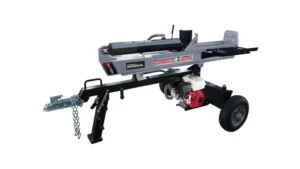
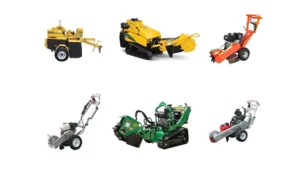
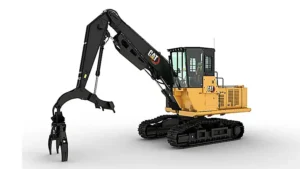
Leave your comment